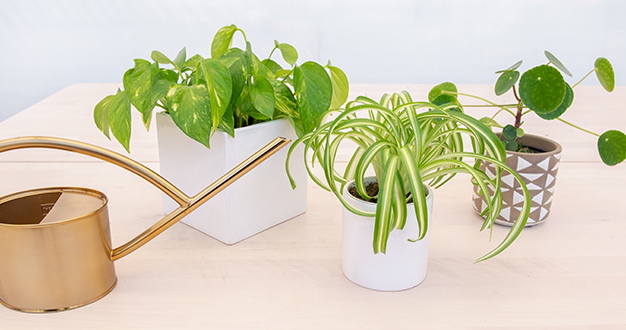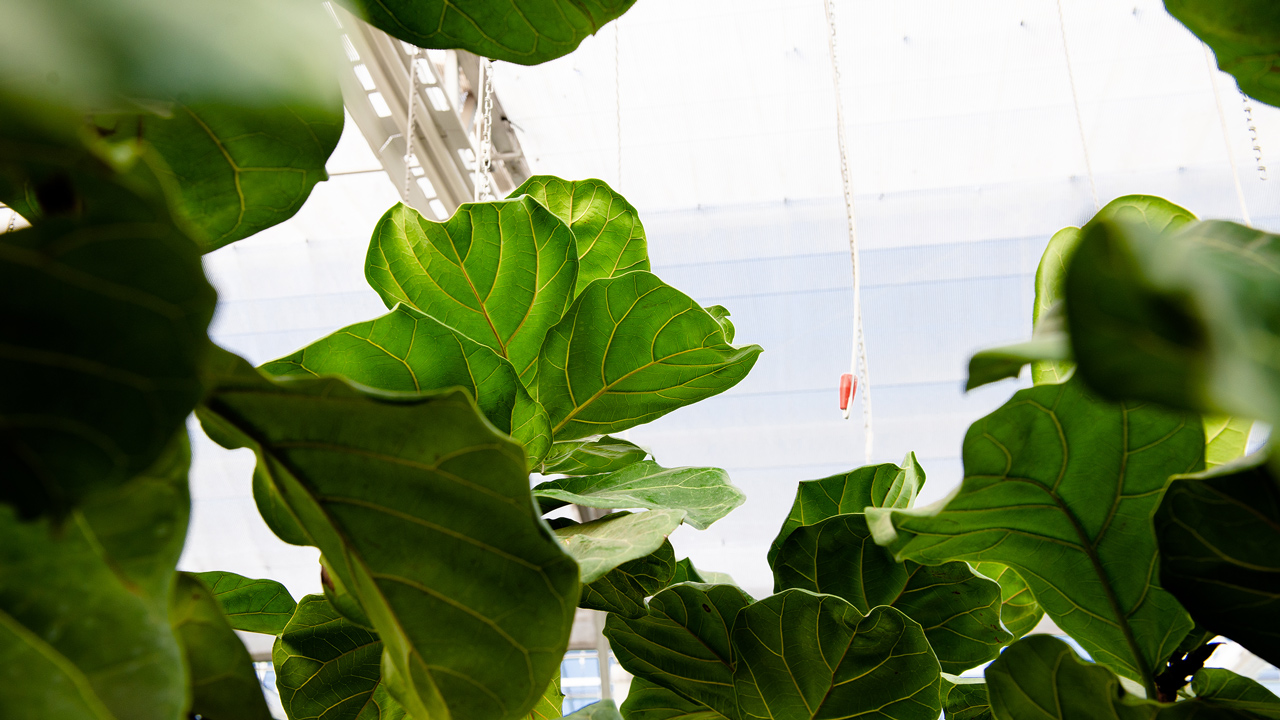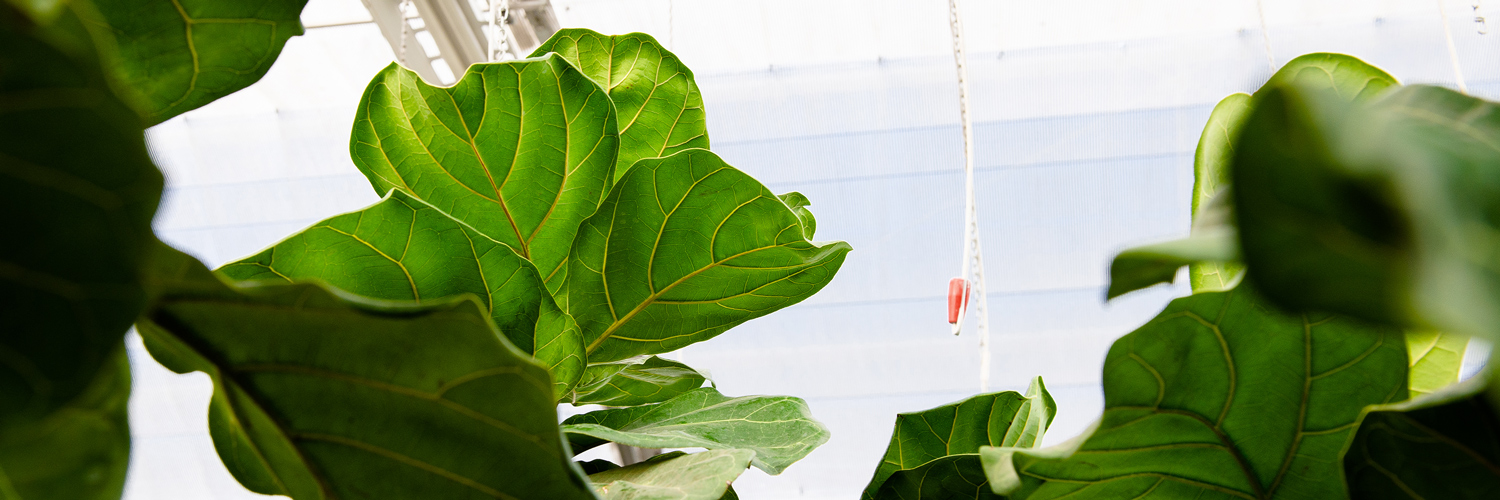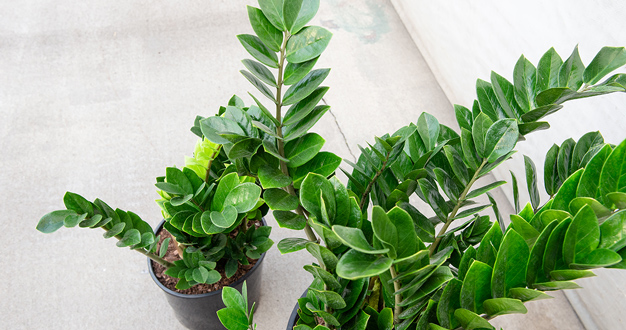
Fiddle leaf fig. There’s good reason this popular indoor tree has gained such a big following in recent years – it’s a beautiful plant, full of character, and it makes a statement in any room where it sits. Here we share about its unusual habits in the wild, why we love it for the home, and a few care tips to help you keep yours thriving.

In the Wild
What you may not know about your mild-mannered fiddle leaf fig is that in the wild, it can actually be a bit of a bully toward other plants in its native community. Fiddle leaf fig is one of a subgroup of species in the genus Ficus that have a peculiar way of getting ahead in life. Classified as a hemiepiphyte, fiddle leaf fig begins life in the wild as a seedling lodged in a crevice of a taller host plant. As it grows, the young fig plant sends down long, sturdy roots straight into the ground. And as more roots come down, they can surround, overwhelm, and eventually kill the host tree – while the ficus stands alone on this new structure it’s built.
Fiddle leaf fig’s close cousins the weeping fig, rubber plant, and Bengal fig – F. benjamina, F. elastica, and F. benghalensis, respectively – do the same thing in the wild, and together, they’re commonly called “strangler” trees. Fortunately, these species we now treasure as houseplants can also grow as less-aggressive, stand-alone plants too.

At Home
It’s those huge, leathery, and deeply veined leaves that make fiddle leaf fig a popular, one-of-a-kind houseplant. As the name suggests, its leaf is roughly a broad oval with a slight constriction, giving it a distinct violin shape. And whether you have a big or small space to work with, there’s a fiddle leaf fig to fit the bill – they can be found in sizes ranging everywhere from an adorable tabletop plant to an impressive indoor tree, commanding attention with its tall, upright structure.
Light
Fiddle leaf fig is an adaptable plant, and generally, its care is about the same as with many indoor foliage plants. Like most of its ficus cousins, fiddle leaf fig enjoys lots of bright, indirect light – even a bit of direct sun – like that from an east window. But during the shorter days of winter, don’t be surprised if your fiddle leaf fig loses some of its leaves.
Moisture + Humidity
When it comes to watering, fiddle leaf fig is a little different than other ficus species and prefers that the soil be allowed to dry out a bit between each watering. To avoid overwatering your fiddle leaf fig, check the level of moisture in the soil using a wooden chopstick, and wait to water until the top half of soil is dry. This will mean more frequent watering during the summer months and a lot less watering during the winter months.

Good drainage is key, so try to choose a container with a drain hole. Or if you don’t have a drain hole, we recommend staging the original nursery pot in your decorative pot, so you can remove the plant during each watering and avoid letting the container sit in extra water. If your plant is too large to water in the sink, you can also use a large turkey baster to remove excess water from the pot saucer – or just be careful with the amount of water you use during each watering.
As a native to lowland tropical rainforests of South Africa, fiddle leaf fig ideally would like conditions a bit warmer with more humidity than we normally find in our homes. So anything to protect it from cold drafts and bump up the humidity will make the plant that much happier. A pebble tray filled with water or a room humidifier can be helpful during the winter. But the best thing you can do for your fiddle leaf is to set it outside during the summers in a brightly shaded spot – maybe with a little morning sun – and let it soak up all that heat and humidity until nighttime temperatures begin dropping below fifty degrees again in the fall.
We’re Here to Help
Keep in mind that it’s completely normal for plants to lose older leaves with time – something that can seem alarming with leaves the size of a fiddle leaf fig’s. But if you have any concerns or questions about yours, we’re always here to help. Just give us a call or stop in to talk with our team.


